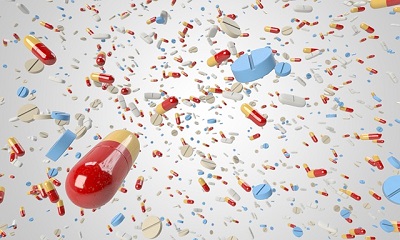Relief in Reach: Discovering Effective Painkillers for Epididymo-Orchitis
The testicles are rarely infected with bacterial infections caused mainly by nearby epididymitis. So it is called epididymo-orchitis. The common pathogenic bacteria are Staphylococcus, Streptococcus, and Escherichia coli. The virus can directly invade the testis, most commonly the mumps virus, which often comes on soon after mumps.

The clinical manifestations of epididymo-orchitis include high fever, chills, testicular pain, and radiation to the groin, often accompanied by nausea and vomiting; Red and swollen scrotal skin, swollen testicles, often accompanied by hydrocele of the tunica vaginalis.
Pain relieving drugs suitable for epididymo-orchitis include topical analgesics or 1% lidocaine spermatic cord blockade.
In addition to painkillers, the disease can also be treated with antibiotics, surgery, and herbal medicines.
The following treatments can be performed for epididymo-orchitis:
1. General treatment: Rest in bed, hold up the scrotum, use ice packs for early cooling, and avoid sexual activity. In the later stage, patients should apply hot or hot water sitz baths.
2. Antibiotic treatment: Before using antibiotics, doctors will take urine samples for bacterial culture and drug sensitivity testing and perform routine chlamydia testing. Practical recommendations include IV fluids of cephalosporin antibiotics and oral administration of doxycycline or 4-quinolones antibiotics.
Then, sensitive antibiotics are selected based on the cultivation results, usually administered intravenously for 1-2 weeks before taking oral antibiotics for 2-4 weeks. Patients with bacterial infections can choose Oral administration of levofloxacin, doxycycline, or azithromycin. Sexual partners should undergo simultaneous examinations and treatments.
3. Blocking therapies for sperm cord: systemic use of antibiotics such as cephalosporins or quinolones, intravenous drip plus oral administration, and antibiotics intravenous drip, usually stopped within one week.
Then, antipyretic and analgesic drugs and glucocorticoids, and 2% lidocaine for 5ml, 5mg dexamethasone, and 0.2g mixture of amikacin were injected locally around the affected side of the spermatic cord subcutaneously for once a day. After three days, it will be changed to once every other day. According to the condition, 3-7 injections were generally given, with an average of 4 times.
4. Anti-inflammatory drugs: 4-quinolones antibiotics. Anti-inflammatory medications help treat acute epididymo-orchitis.
5. Herbal medicine: herbal medicines Diuretic and Anti-inflammatory Pill can improve micro-circulation, reduce the generation of epididymal fibrous tissue, and shorten the course of the disease.
6. Surgical treatment: For suppurative epididymo-orchitis, patients can choose to perform a capsulotomy and fasciotomy for epididymis and spermatic cord, incision, drainage for abscesses, or epididymectomy. For patients with testicular infarction or large testicular abscess, orchiectomy is feasible.
Most acute epididymo-orchitis can be cured with timely and effective treatment. Antibiotics can alleviate the pain and swelling symptoms of the vast majority of patients, but a few patients still experience pain for a period of time.
Many patients may develop chronic inflammation due to untimely and incomplete treatment.
Unilateral epididymo-orchitis can cause epididymitis obstruction but generally does not cause infertility. If it is bilateral, even with timely anti-infective treatment, a few patients may lead infertility; Very few patients may experience testicular necrosis and require removal of the testicles. Some patients may experience varying degrees of testicular atrophy after 1-2 months.
You may also be interested in:
To Treat Epididymo-Orchitis, There are Several Things You Can Do at Home!
Epididymo-orchitis Success Case - A testimonial from India
Watch Out: These Foods May Worsen Your Epididymitis Symptoms



